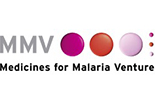2-aminobenzimidazoles for leishmaniasis: From initial hit discovery to in vivo profiling
24 fev 2021
Leishmaniasis is a major infectious disease with hundreds of thousands of new cases and over 20,000 deaths each year. The current drugs to treat this life-threatening infection have several drawbacks such as toxicity and long treatment regimens. A library of 1.8 million compounds, from which the hits reported here are publicly available, was screened against Leishmania infantum as part of an optimization program; a compound was found with a 2-aminobenzimidazole functionality presenting moderate potency, low metabolic stability and high lipophilicity. Several rounds of synthesis were performed to incorporate chemical groups capable of reducing lipophilicity and clearance, leading to the identification of compounds that are active against different parasite strains and have improved in vitro properties. As a result of this optimization program, a group of compounds was further tested in anticipation of in vivo evaluation. In vivo tests were carried out with compounds 29 (L. infantum IC50: 4.1 μM) and 39 (L. infantum IC50: 0.5 μM) in an acute L. infantum VL mouse model, which showed problems of poor exposure and lack of efficacy, despite the good in vitro potency.






